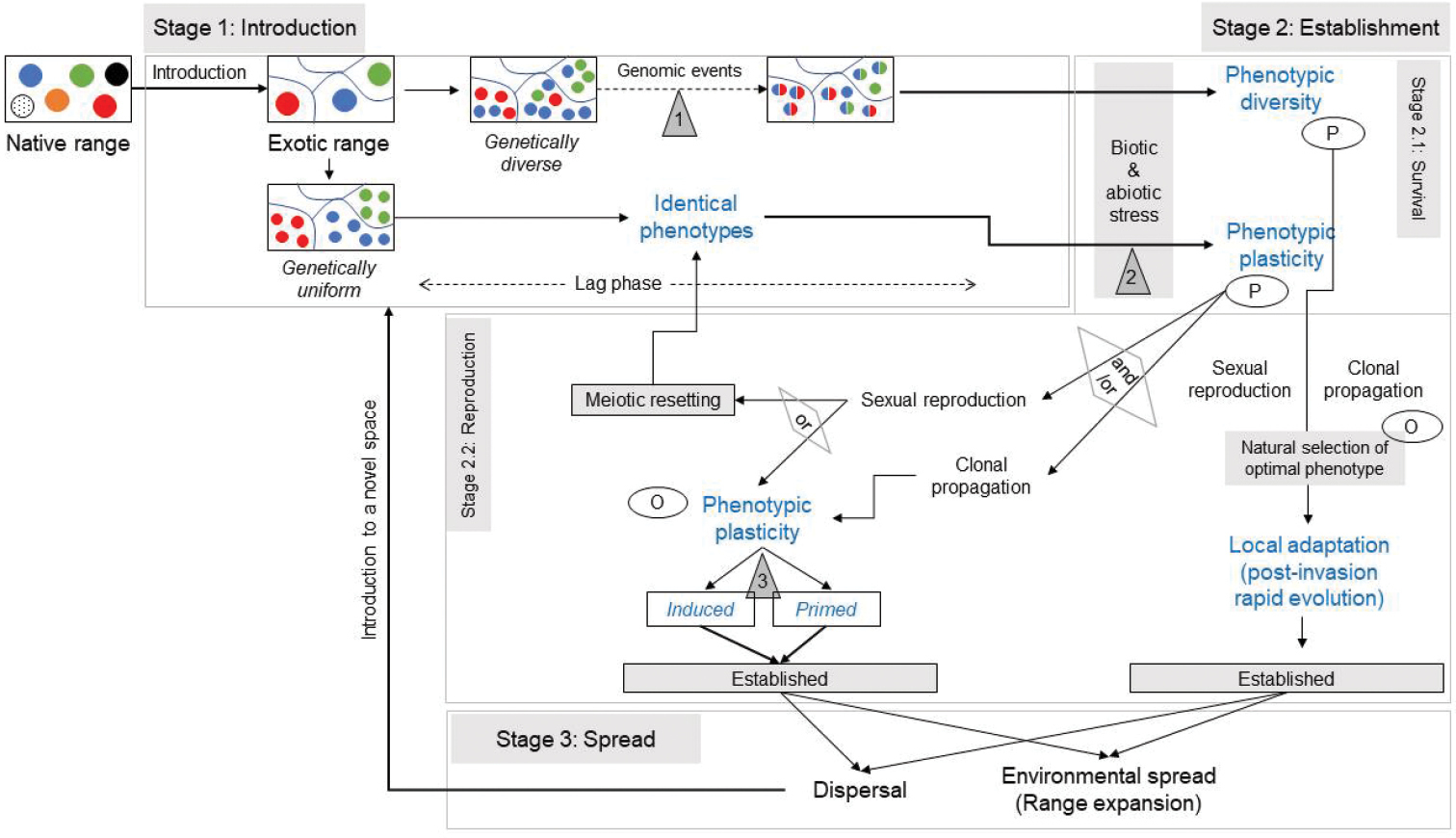
|
||
|
Conceptual framework for differentiating genetic and epigenetic basis for phenotypic variations across three stages of alien plant invasion process (introduction, establishment, spread). While genetic differentiation between introduced populations may cause phenotypic variation which leads to local adaptation and post-invasion rapid evolution through selection of traits and natural selection of optimal phenotype across environmental conditions, epigenetically regulated phenotypic variations are more prevalent in genetically similar populations. Three sites where epigenetic mechanisms may influence invasion success have been marked with triangles: 1) in case of genetic admixture between different genotypes present in a region, 2) biotic and abiotic stress induced epigenetic alterations among the genetically similar populations, and 3) transmission of epigenetic information from the parents (P) to the offspring (O) making the progeny capable of dealing with similar kinds of parental environment. |